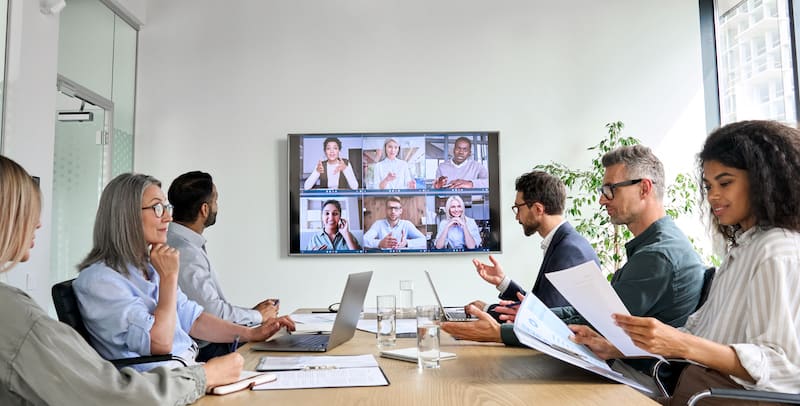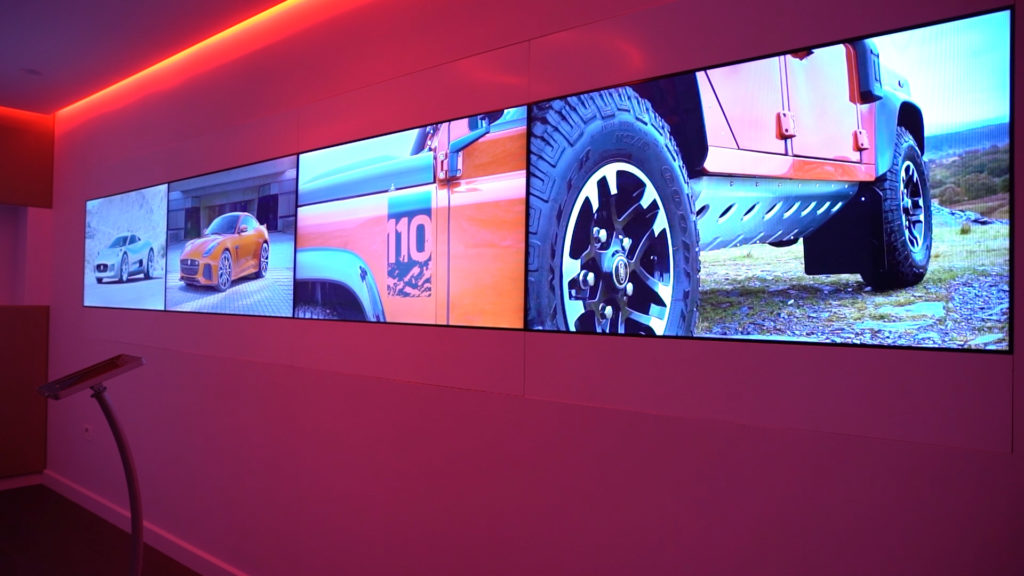Typical Errors to Avoid Throughout Your AV Installation
Typical Errors to Avoid Throughout Your AV Installation
Blog Article
Designing Dynamic Knowing Environments With Advanced Sound Visual Systems
In the rapidly developing landscape of education, the assimilation of advanced audio-visual systems stands as an essential growth, transforming traditional class into dynamic knowing environments. As we explore the potential of these systems, one need to consider exactly how they reshape pedagogical techniques and effect understanding outcomes.
Understanding Advanced AV Solutions
In today's swiftly advancing educational landscape, advanced audiovisual (AV) systems have become integral to producing engaging and reliable knowing environments. These systems incorporate a large range of technologies, consisting of interactive displays, high-def projectors, and innovative stereo, every one of which add to an extra immersive educational experience. By leveraging these technologies, teachers can provide details in vibrant and diverse styles, accommodating numerous learning styles and demands.
Interactive displays, for circumstances, make it possible for real-time collaboration and feedback, permitting trainees to engage more deeply with the web content. Advanced audio systems provide clear sound, which is vital for maintaining focus and making sure that all pupils can hear and understand the product being presented.
Integrating advanced AV systems needs not only an understanding of the modern technology itself yet additionally calculated planning to straighten these devices with educational objectives. By thoughtfully incorporating these systems, schools can foster an atmosphere that sustains ingenious training methodologies and improves the overall instructional experience for both teachers and trainees.
Enhancing Student Engagement
Everybody acknowledges that pupil interaction is a crucial component of successful knowing outcomes. Engaged pupils are more probable to soak up information, get involved proactively, and develop crucial believing skills. Advanced audio-visual (AV) systems play a considerable role in promoting this interaction by developing interactive and immersive understanding settings. These systems can change typical classrooms right into dynamic settings where students are motivated to find out.
Top notch audio and aesthetic components help catch students' focus and improve their understanding of complex topics. Utilizing large screens with crisp images and clear sound can make lessons more captivating and understandable. Additionally, AV systems facilitate varied teaching methods, such as joint jobs and multimedia discussions, which can deal with numerous discovering styles and keep pupils interested.
Furthermore, the consolidation of AV systems permits real-time comments and communication between teachers and pupils. This immediacy can motivate active participation, as trainees feel a lot more connected to the lesson and certain in sharing their ideas. Therefore, by incorporating innovative AV technologies, universities can develop a stimulating atmosphere that not just improves engagement but additionally supports far better scholastic efficiency and student satisfaction.
Integrating Interactive Technologies
Although the assimilation of interactive technologies in educational settings notes a significant change from conventional mentor approaches, its effect on trainee discovering and interaction is extensive. Interactive technologies, such as smart boards, electronic tablet computers, and online truth applications, have actually redefined the classroom, transforming it right into a dynamic space where students proactively get this post involved in their learning journey. These innovations foster cooperation, imagination, and critical thinking, as pupils are urged to connect with electronic material, execute simulations, and participate in analytic activities.
Making use of interactive technologies promotes real-time comments and assessment, enabling educators to tailor direction to satisfy specific requirements. This immediacy in responses enhances the discovering procedure, making it possible for students to comprehend principles better and rapidly address misunderstandings. Such technologies promote inclusivity by providing diverse learners with multiple means of engaging and accessing with material.
In addition, these tools bridge the void between academic expertise and sensible application, preparing students for a technology-driven world. By creating immersive and interactive understanding experiences, educators are much better furnished to catch pupils' focus and receive their passion. As the instructional landscape proceeds to advance, the calculated integration of interactive modern technologies remains crucial in fostering a engaging and effective discovering setting.
Adjusting to Diverse Learning Styles
Tailoring instructional methods to fit varied understanding designs is important in promoting a comprehensive and reliable classroom atmosphere. Advanced audio aesthetic systems give versatile tools that can deal with the different choices of students. For aesthetic students, devices such as interactive whiteboards and high-resolution projectors offer abundant visual material that boosts understanding and retention. Acoustic students take advantage of premium noise systems that make certain clarity throughout lectures and make it possible for Look At This the combination of audio products like podcasts and tape-recorded presentations.
Kinesthetic learners thrive in environments that permit hands-on interaction. Technologies such as online reality (VIRTUAL REALITY) and augmented truth (AR) use immersive experiences that engage these students by allowing them to control electronic things or discover online settings. Flexible learning software program can tailor material shipment to private learning preferences, helping with customized education pathways.
Applying Joint Devices
In today's interconnected instructional landscape, the assimilation of joint tools plays a critical function in improving trainee engagement and helping with synergy (AV Installation). These devices are essential in developing dynamic learning settings that foster communication, critical reasoning, and problem-solving skills amongst students. By leveraging innovative audio-visual systems, instructors can execute systems that support real-time communication, file sharing, and joint job development, therefore encouraging an extra active participation from students

Including collaborative tools within the classroom not only aligns with contemporary academic standards however additionally prepares trainees for the modern workforce where team effort and technical efficiency are very valued (AV Installation). As establishments aim to make environments that are both inclusive and ingenious, the strategic implementation of these devices comes useful link to be increasingly vital, making sure pupils are equipped with the abilities required for future success

Final Thought
High-def projectors, interactive displays, and innovative noise systems produce immersive settings that accommodate varied knowing designs and help with clear communication. Collaborative devices allow smooth pupil collaboration, preparing learners for future difficulties in a technology-driven globe, thereby improving both understanding and retention of understanding.
Everybody recognizes that student involvement is a critical element of successful knowing results.Although the integration of interactive technologies in instructional settings marks a significant shift from traditional mentor techniques, its influence on student knowing and involvement is profound. Interactive innovations, such as smart boards, digital tablet computers, and digital fact applications, have actually redefined the class, changing it into a dynamic room where students proactively get involved in their knowing journey. By producing immersive and interactive understanding experiences, educators are much better outfitted to catch trainees' interest and suffer their passion. These devices are important in producing vibrant knowing settings that foster communication, vital thinking, and analytical abilities amongst students.
Report this page